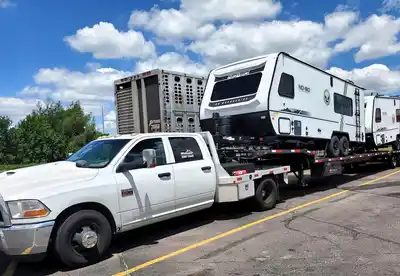Car shipping services, once a niche, now play a pivotal role in the global automotive sector. Their evolution mirrors the broader shifts in transportation, technology, and trade. As the world became increasingly interconnected, the demand for efficient and safe car transport solutions surged.
Historical Overview
Early Beginnings
In the late 19th century, cars were luxury items, often transported via rail. Intriguingly, these early vehicles, fewer in number, sometimes traveled alongside livestock or commodities. Trains offered reliability, but this mode had limitations in flexibility and reach.
The Rise of the Automobile Industry
Post World War I, a boom in car production and ownership transformed the landscape. The Ford Model T, an emblem of this era, symbolized affordability and mass production. Consequently, the sheer volume of vehicles necessitated specialized shipping methods. Roads became bustling arteries of commerce, signaling the onset of a new transport age.
Modern Car Transport
By the late 20th century, the introduction of dedicated car carrier trailers revolutionized shipping. Meanwhile, the maritime sector embraced roll-on/roll-off ships, enhancing intercontinental transport. These innovations, emphasizing efficiency and safety, catered to an ever-expanding global market, underlining car shipping’s immense importance today.
Technological Advancements
Automated Tracking Systems
The 90s introduced GPS to the world; car shipping wasn’t left behind. Today’s sophisticated tracking systems allow precise vehicle monitoring. Real-time updates ensure transparency and bolster customer trust. Interestingly, it’s said the current systems can track a vehicle to a few centimeters!
Eco-Friendly Transport Solutions
Environmental concerns drive innovation in our sector. Today, electric trucks are no longer science fiction but a burgeoning reality. Some top-tier car shipping companies have committed to becoming carbon-neutral by 2040. Additionally, hybrid carriers reduce emissions without compromising transport efficiency.
Innovations in Loading and Offloading
Safety and efficiency dominate modern loading methodologies. Pneumatic platforms, replacing older hydraulic systems, provide smoother vehicle transitions. Did you know? These platforms can adjust to specific vehicle weights, ensuring optimal balance. Innovations like rotating platforms also expedite the offloading process, shaving crucial minutes off delivery times.
Regulations and Standards
Safety Regulations
Ensuring vehicle safety during transit is paramount. Various regulatory bodies enforce stringent transport guidelines. For instance, the U.S. Department of Transportation mandates regular vehicle inspections. Did you know? Over 3.5 million truck inspections occur yearly, ensuring the secure transit of commodities, including cars. Advanced tie-down techniques also prevent cargo shifts, preserving both vehicle integrity and public safety.
Environmental Concerns
The car shipping industry grapples with its carbon footprint. International regulations, like the IMO 2020 sulfur cap, influence maritime transport. This regulation alone aims to reduce sulfur emissions by 77%. Furthermore, many countries impose strict emissions standards on transport vehicles. For a fascinating perspective: some European nations incentivize eco-friendly fleets, offering tax reductions and grants, fostering a sustainable transport future.
The Impact of Globalization
Globalization has redefined car shipping dynamics. Vehicles made in Germany can be spotted on U.S. roads, and Japanese hybrids cruise African highways. This interconnected market grew by a staggering 40% in the last decade. Trade agreements further facilitated seamless vehicle movement across borders, making tariffs and customs secondary concerns. Consequently, car shipping services transformed, optimizing for vast distances and diverse terrains.
Future Prospects
Autonomous Vehicle Shipping
The horizon teems with potential: autonomous shipping. Semi-autonomous trucks are already here, and complete autonomy isn’t far off. Estimates suggest that by 2030, nearly 25% of shipped vehicles might be transported autonomously. Efficiency and safety could reach unprecedented levels, reducing human-induced errors.
Sustainability and Green Initiatives
As environmental consciousness grows, sustainability isn’t optional; it’s imperative. Industry leaders project an increase in solar-powered carriers in the coming decade. Some innovative minds even speculate about the possibility of “green ships,” using wind and solar energy. It’s thrilling to imagine a near-zero-emission shipping industry.
Digital Innovations and Integrations
The digital age permeates car shipping too. Blockchain technology promises transparent, tamper-proof transaction records. Moreover, the integration of IoT devices could allow predictive maintenance, avoiding sudden breakdowns. Did you know? Some platforms are developing Virtual Reality (VR) interfaces, enabling customers to virtually “tour” their vehicle during transit, ensuring transparency and engagement.
Future Prospects
Autonomous Vehicle Shipping
The future holds intrigue for car shipping, with autonomous transport being the star. Tech giants and auto manufacturers alike are racing to perfect this technology. By 2035, experts speculate that a bulk of transport routes could see driverless carriers, optimizing routes and reducing transit times.
Sustainability and Green Initiatives
Eco-friendliness is more than a trend; it’s the industry’s future. Carriers are progressively adopting biofuels, cutting carbon emissions significantly. Surprisingly, there’s chatter about algae-based fuels powering future marine transport, positioning it at the forefront of eco-innovation.
Digital Innovations and Integrations
Beyond tangible transport innovations, the digital realm is brimming with potential. Integration of AI can lead to smarter route optimizations, reducing fuel consumption. An interesting nugget: AI systems are being developed to “forecast” potential logistical issues, offering preemptive solutions, ensuring smoother operations.
Car shipping’s journey, from rudimentary rail systems to sophisticated autonomous carriers, reflects humanity’s innovative spirit. This evolution isn’t just about cars; it’s a testament to global interconnectivity, technological progression, and an unwavering commitment to sustainability. As we steer into the future, one thing remains clear: the industry will continue to shape, and be shaped by, the world’s ever-evolving demands.



